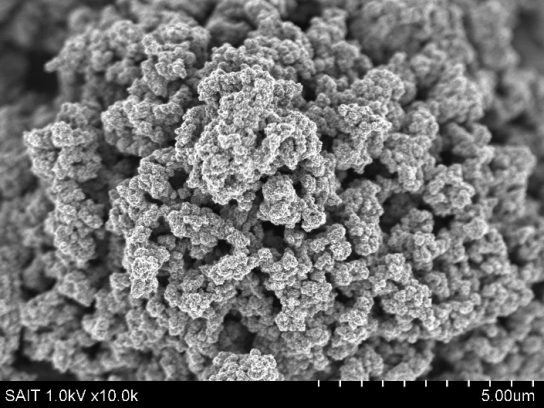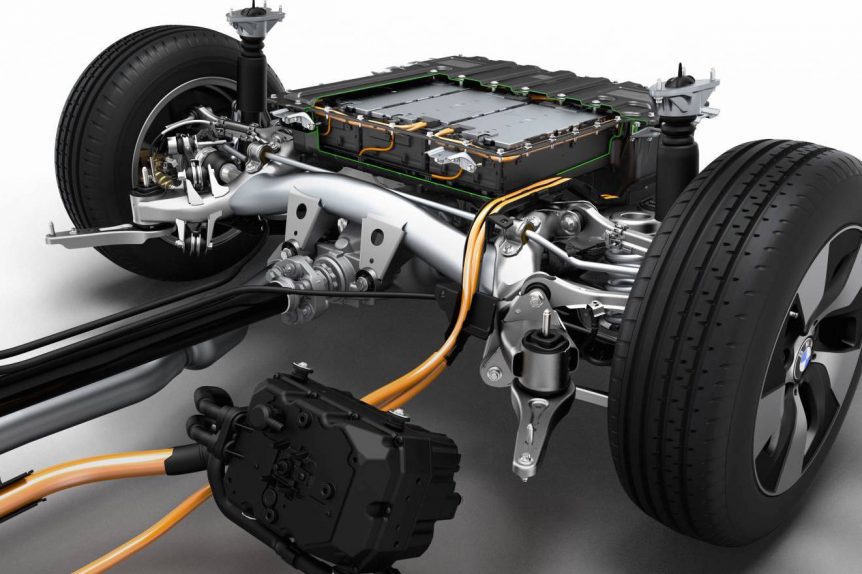Graphene is fascinating stuff, with tons of promise. Whether it can produce usable results for energy storage is still an open question. But Samsung and a startup called Real Graphene may have at least a start in that realm. GAC, a Chinese auto firm, seems to be promising batteries before the end of what is left of this year. There may be hope in the midst of a dark winter. Samsung’s Lagging Promise In 2017 a team of researchers at the Samsung Advanced Institute of Technology (SAIT) developed a “graphene ball,” promising a 45-percent increase in capacity, and five times faster charging speeds than standard lithium-ion batteries. Hoping to power mobile devices and electric vehicles, SAIT collaborated closely with Samsung SDI* as well as a team from Seoul National University’s School of Chemical and Biological Engineering. *Not a simple abbreviation, SDI stands for “Samsung with the initial letter S, ‘Display’ and ‘Digital’ with D and ‘Interface’ and ‘Internet Component’ with …
Solid Power Batteries – Headed for Production?
So often, promising developments in batteries, solar cells, and electric vehicles seem stuck in the “five years from now” limbo. Perhaps there may be hope that a current, real-time development is before us. MSNBC reports Solid Power has a pilot production line for its solid-state batteries up and running – as of three days ago. Forgive the sound track, which can be turned down or off. The information is worthwhile, however. Solid Power, a 2012 outgrowth of research performed at the University of Colorado Boulder, now holds down 21,000 square feet at the Colorado Tech Center. Their web site expresses some of the frustration many of who have been waiting through the last decade feel about the near-static trend in lithium battery development. “While current lithium-ion batteries continue to provide incremental improvements, the industry demands more advanced solutions capable of providing a true jump in performance thereby accelerating e-mobility.” Solid Power might have a solution to the slow growth of …
If Santa Lived in a Soho Loft and Built Drones
There is much happening in electric aviation, including this flying Santa Claus, dangling from what is claimed to be the world’s largest homemade drone. And in this interesting behind-the-scenes video we find that Casey Neitstat either has arms of steel, or a clever harness maker who probably outfits touring companies for Peter Pan stage presentations. The 16-motor system seems capable of hauling a fairly large human skyward, but some critics think this is a sham of some sort. Your editor sides with the theory that this is a real drone, since Samsung has seen fit to link its name to the project (and the video evidence seems fairly convincing). In the interests of full disclosure, though, Casey has pulled some fakery in previous stunts, so take this all with several grains of salt, just in case. If this isn’t enough Casey and Santa-dragging drones for you, try on the VR headset you got for Christmas and indulge in the full …
Solid State Electrolyte – a Safer, More Powerful Alternative
Making batteries smaller, lighter, and more powerful is an ongoing trend, supposedly climbing at eight percent per year in terms of energy density (energy stored per unit of weight). Even this blog is guilty of sometimes unrequited enthusiasm for some new developments that appear to be an “answer” for aircraft use. Getting a battery that double or quintuples energy density would be ideal for aircraft, but seems to be a labor worthy of Sisyphus (you could look it up). As constantly noted here, batteries have three major components, the anode, or negative electrode; the cathode, or positive electrode; and the electrolyte, usually a liquid that allows the flow of ions between electrodes. That electrolyte is subject to overheating and on rare occasions, bursting into flames. That has led researchers at MIT, Samsung, and in California and Maryland to develop a solid-state electrolyte that might overcome the safety issue while providing more energy storage in a given space. Yan Wang, an …
Samsung Almost Doubles Li-Ion Battery Capacity – in the Near Future
Several sources report on Samsung’s announcement that they have developed a new technology that enables them to coat silicon battery cathodes with high crystal graphene, virtually doubling the capacity of lithium-ion batteries. Of course, Samsung relates this immediately to their popular smartphones and tablets, but the significance of this is not lost on electric vehicle designers. Doubling the range of EVs “without adding a single pound of weight” would be a true game changer. But don’t get excited too quickly. Silicon electrodes have been a major research effort for people like Dr. Yi Cui, who spoke at this year’s Electric Aircraft Symposium. Issue surrounding their successful use have included silicon’s expansion when being charged and contraction when being discharged. This errant flexibility causes eventual disintegration of the electrodes and shuts down the battery. Attempts to use silicon nanowires still have led to embrittlement. Kompulsa.com reports Cho Jin-young from BusinessKorea explaining, “Currently, the development of high-capacity battery materials has been mostly done …
Two “New” Battery Contenders
With Tesla’s announcement that its new battery pack for its Rev. 3 Roadster will increase the car’s range to as much as 400 miles (your mileage may vary), two contenders are putting proclaiming equivalent or better performance from their unique technologies. These companies are relatively new, but have fairly long development histories. They are both moving toward commercializing what otherwise would be academic demonstrations of their technologies. EnerG2 – Taking Carbon to New Levels A Seattle, Washington-based materials development firm, EnerG2’s Carbon Technology Platform (CTP), is based upon a polymer chemistry foundation, and according to the company, “represents an ability to engineer and synthesize high-performance, uniquely tailored high-purity carbons, at large scale and low cost.” The company makes CTP materials used in lead-acid batteries, ultracapacitors, lithium batteries and natural gas storage. They’ve recently signed a partnership agreement with BASF, showing their acceptance by a multinational powerhouse. Their specialization in “hard carbons” and combining those with silicon for battery electrodes, leads …


